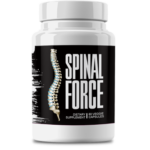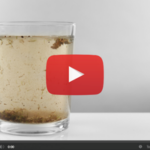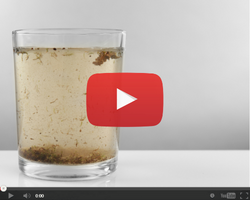This Village-Made Chinese Pain Reliever Eliminates Back And Joint Pain!
Living with a Lateral Meniscus Tear: Management and Coping Strategies

Introduction to Living with a Lateral Meniscus Tear
Living with a lateral meniscus tear can be challenging, but with the right knowledge and strategies, you can manage it effectively. A lateral meniscus tear is a common knee injury that affects the cartilage, causing pain and limiting mobility. Understanding this condition is crucial for early diagnosis and effective management. In this post, we'll explore the symptoms, diagnosis, non-surgical and surgical treatment options, lifestyle adjustments, coping strategies, and long-term outlook for those living with a lateral meniscus tear.
Understanding a Lateral Meniscus Tear
The lateral meniscus is a C-shaped piece of cartilage located on the outer part of your knee. It acts as a cushion between the femur (thigh bone) and the tibia (shin bone). A lateral meniscus tear can occur due to sudden twisting or pivoting movements, especially during sports activities. Degenerative changes in the knee joint, often seen in older adults, can also lead to a tear. Recognizing the significance of this injury is the first step toward effective management and recovery.
Importance of Early Diagnosis
Early diagnosis of a lateral meniscus tear is essential for preventing further damage and complications. Delayed treatment can lead to increased pain, reduced knee function, and a higher risk of developing osteoarthritis. By seeking prompt medical attention, you can receive an accurate diagnosis and begin appropriate treatment. Early intervention often results in better outcomes and a quicker return to your normal activities.
The Impact on Daily Life
A lateral meniscus tear can significantly impact your daily life. Activities such as walking, climbing stairs, and even standing for prolonged periods can become painful and challenging. This injury can also affect your ability to participate in sports and other physical activities. The pain and limited mobility can lead to frustration and a decrease in overall quality of life. However, with proper management and coping strategies, you can adapt and continue to lead an active and fulfilling life.
Symptoms and Diagnosis of a Lateral Meniscus Tear
Common Symptoms
Common symptoms of a lateral meniscus tear include knee pain, swelling, and stiffness. You may also experience a popping sensation at the time of injury, followed by difficulty moving the knee. Locking or catching of the knee joint, as well as a feeling of instability, are also typical signs. If you notice these symptoms, it is important to seek medical attention to determine the cause and extent of the injury.
Diagnostic Procedures
To diagnose a lateral meniscus tear, your doctor will perform a physical examination and ask about your symptoms and medical history. Imaging tests, such as X-rays and MRI scans, are often used to confirm the diagnosis and assess the severity of the tear. These tests provide detailed images of the knee joint, allowing your doctor to determine the best course of treatment. Early and accurate diagnosis is key to effective management and recovery.
When to See a Doctor
If you experience persistent knee pain, swelling, or difficulty moving your knee, it is important to see a doctor. Ignoring these symptoms can lead to further damage and complications. Seek medical attention as soon as possible to receive a proper diagnosis and begin appropriate treatment. Early intervention can prevent long-term issues and help you return to your normal activities more quickly.
Non-Surgical Management of a Lateral Meniscus Tear
Physical Therapy and Exercises
Physical therapy is a key component of non-surgical management for a lateral meniscus tear. A physical therapist can design a personalized exercise program to strengthen the muscles around your knee, improve flexibility, and reduce pain. These exercises can help restore knee function and prevent further injury. Consistency and adherence to your therapy program are essential for optimal results.
Use of Braces and Supports
Wearing a knee brace or support can provide stability and reduce strain on the injured meniscus. Braces can help alleviate pain and prevent further injury by limiting unwanted movements. Your doctor or physical therapist can recommend the appropriate type of brace for your specific condition. Using a brace in conjunction with other non-surgical treatments can enhance your recovery and improve knee function.
Pain Management Techniques
Managing pain is an important aspect of living with a lateral meniscus tear. Over-the-counter pain relievers, such as ibuprofen or acetaminophen, can help reduce pain and inflammation. Your doctor may also recommend prescription medications or corticosteroid injections for more severe pain. In addition to medication, applying ice packs to the affected area and elevating your leg can help alleviate pain and swelling.
Surgical Options for a Lateral Meniscus Tear
Types of Surgical Procedures
If non-surgical treatments are not effective, surgical intervention may be necessary. The two main types of surgical procedures for a lateral meniscus tear are meniscectomy and meniscus repair. A meniscectomy involves removing the damaged portion of the meniscus, while a meniscus repair involves stitching the torn edges together. The choice of procedure depends on the location and severity of the tear, as well as your overall knee health.
Preparing for Surgery
Preparing for surgery involves several steps to ensure a successful outcome. Your doctor will provide specific instructions, which may include stopping certain medications, fasting before the procedure, and arranging for someone to drive you home. It is important to follow these instructions carefully to minimize the risk of complications. Additionally, maintaining a healthy lifestyle and staying active prior to surgery can improve your overall recovery.
Post-Surgical Care and Rehabilitation
Post-surgical care and rehabilitation are crucial for a successful recovery. Following surgery, you will need to follow a rehabilitation program designed by your doctor or physical therapist. This program will include exercises to restore knee strength and flexibility, as well as guidelines for gradually resuming your normal activities. Adhering to your rehabilitation plan and attending follow-up appointments are essential for achieving the best possible outcome.
Lifestyle Adjustments for Living with a Lateral Meniscus Tear
Modifying Physical Activities
Modifying your physical activities is important to prevent further injury and manage your symptoms. Avoid high-impact activities that put excessive strain on your knee, such as running and jumping. Instead, opt for low-impact exercises like swimming, cycling, and walking. These activities can help maintain your fitness and improve knee function without exacerbating your condition. Listening to your body and avoiding activities that cause pain is essential for long-term management.
Importance of Weight Management
Maintaining a healthy weight is crucial for managing a lateral meniscus tear. Excess weight puts additional stress on your knee joints, which can worsen pain and inflammation. Adopting a balanced diet and engaging in regular physical activity can help you achieve and maintain a healthy weight. Consulting with a nutritionist or dietitian can provide personalized guidance and support for weight management. Achieving a healthy weight can significantly improve your symptoms and overall quality of life.
Ergonomic Adjustments at Home and Work
Making ergonomic adjustments at home and work can help alleviate knee pain and prevent further injury. Ensure that your workspace is set up to promote good posture and reduce strain on your knees. Use supportive chairs and footrests to maintain proper alignment. At home, consider using assistive devices such as handrails and raised toilet seats to make daily activities easier. Making these adjustments can help you manage your symptoms and maintain your independence.
Coping Strategies and Mental Health
Dealing with Chronic Pain
Living with chronic pain from a lateral meniscus tear can be challenging, but there are strategies to help you cope. Pain management techniques, such as medication, physical therapy, and relaxation exercises, can provide relief. Additionally, staying active and maintaining a positive outlook can improve your overall well-being. It is important to communicate with your healthcare provider about your pain and seek support when needed. Managing chronic pain requires a comprehensive approach and ongoing effort.
Support Groups and Community Resources
Joining support groups and accessing community resources can provide valuable support and information for living with a lateral meniscus tear. Connecting with others who have similar experiences can help you feel less isolated and more understood. Support groups can offer practical advice, emotional support, and encouragement. Additionally, community resources such as rehabilitation programs and educational workshops can provide valuable information and assistance. Utilizing these resources can enhance your coping strategies and improve your quality of life.
Mindfulness and Stress Management
Practicing mindfulness and stress management techniques can help you cope with the mental and emotional challenges of living with a lateral meniscus tear. Mindfulness exercises, such as meditation and deep breathing, can help you stay present and manage stress. Engaging in activities that you enjoy, such as hobbies and socializing, can also improve your mental well-being. It is important to prioritize self-care and seek professional help if needed. Managing stress and maintaining a positive outlook are essential for overall health and well-being.
Long-Term Outlook and Prevention
Monitoring and Follow-Up Care
Regular monitoring and follow-up care are essential for managing a lateral meniscus tear and preventing complications. Attend all scheduled appointments with your healthcare provider and follow their recommendations for ongoing care. Monitoring your symptoms and progress can help identify any issues early and allow for timely intervention. Staying proactive and engaged in your care can improve your long-term outlook and overall knee health.
Preventive Measures to Avoid Re-Injury
Taking preventive measures to avoid re-injury is important for maintaining knee health. Strengthening the muscles around your knee, maintaining a healthy weight, and using proper techniques during physical activities can help prevent further injury. Wearing appropriate footwear and using knee supports during high-risk activities can also provide protection. Being mindful of your movements and avoiding activities that put excessive strain on your knee can help you stay injury-free.
Staying Active and Healthy
Staying active and healthy is crucial for managing a lateral meniscus tear and maintaining overall well-being. Engage in low-impact exercises that promote joint health and cardiovascular fitness. Maintain a balanced diet rich in nutrients to support overall health and weight management. Staying active and healthy can improve your symptoms, enhance your quality of life, and reduce the risk of further injury. Prioritizing your health and well-being is essential for long-term management.
Conclusion
Summary of Key Points
Living with a lateral meniscus tear requires a comprehensive approach to management and coping. Early diagnosis, non-surgical and surgical treatment options, lifestyle adjustments, and coping strategies are all essential components of effective management. Regular monitoring, preventive measures, and staying active and healthy can improve your long-term outlook and overall well-being. With the right knowledge and support, you can successfully manage a lateral meniscus tear and lead an active and fulfilling life.
Encouragement and Support
Living with a lateral meniscus tear can be challenging, but you are not alone. Seek support from healthcare providers, support groups, and community resources to help you navigate this journey. Stay positive, stay active, and prioritize your health and well-being. With the right strategies and support, you can manage your condition and continue to enjoy the activities you love. Remember that recovery is a process, and every step forward is a step toward a healthier and happier life.
Resources for Further Information
If you would like more information on managing a lateral meniscus tear, consider visiting reputable websites such as the American Academy of Orthopaedic Surgeons (AAOS) and the Mayo Clinic. These resources provide valuable information on diagnosis, treatment options, and lifestyle adjustments. Additionally, consulting with a healthcare provider can provide personalized guidance and support. Accessing reliable information and seeking professional advice can help you make informed decisions and effectively manage your condition.








